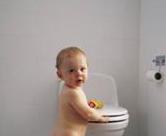How to Start Potty Training Boys and Girls

Learn how to start potty training toddlers or children with developmental disabilities, such as PDD-NOS. Most parents are anxious to start working with their children as soon as possible, especially with the high cost of diapers nowadays. Initially, it may be difficult knowing when to start potty training. Autism in children can also make it even more challenging.
Therefore, I have provided a list of the skills needed to start official training that can be taught using applied behavior analysis for children with developmental disabilities. Each child’s official potty training age will vary depending on his/her level of ability to complete these behaviors, but you may begin working with your child on these skills as soon as you want.
Learning How to Start Potty Training
You want to start by teaching the necessary behaviors needed. Each child will develop at his/her own pace, so be patient. Using my free potty charts are a great way to help motivate children in learning and get them excited about becoming a big kid.
• Start working on saying, “Potty” or other words, using sign language or PECS pictures indicating the need to go
• Start working on pulling pants up and down independently
• Practice just sitting on the chair or toilet, building up to 1 minute
• Teach your child the difference between wet and dry.
• Practice following 1-2 step directions
• Work on imitation behaviors, such as “Touch your Nose” or “Clap your hands”
Making sure to praise, praise, praise for any of these or related behaviors is very important. You want the child to think that potty training is fun and exciting. Knowing how to praise children is also critical.
Although, the average age for potty training is around 18-24 months, some children may show readiness prior to this age or much later. It really depends on whether the child is able to do the behaviors listed above.
Boys may show readiness signs later than girls and will often not show any interest at all. This is completely normal. The most important thing to remember is never to scold for going in a diaper or in their pants and avoid showing any signs of frustration.
Children will sense if you are frustrated and that will make them feel like there is something wrong with them for not being able to do some of these things. It can ultimately lead to the child not wanting to try at all or hiding in the corner when going in their pants. They may get afraid to tell you when they have gone poop causing diaper rash in older more active children after they sit in it for too long.
More Tips on Toileting Behavior
• Potty Training in Three Days – Day 1
• Maintenance Phase - Day 2
• Guide for Public Places – Day 3
• How to Start Potty Training a Bowel Movement



